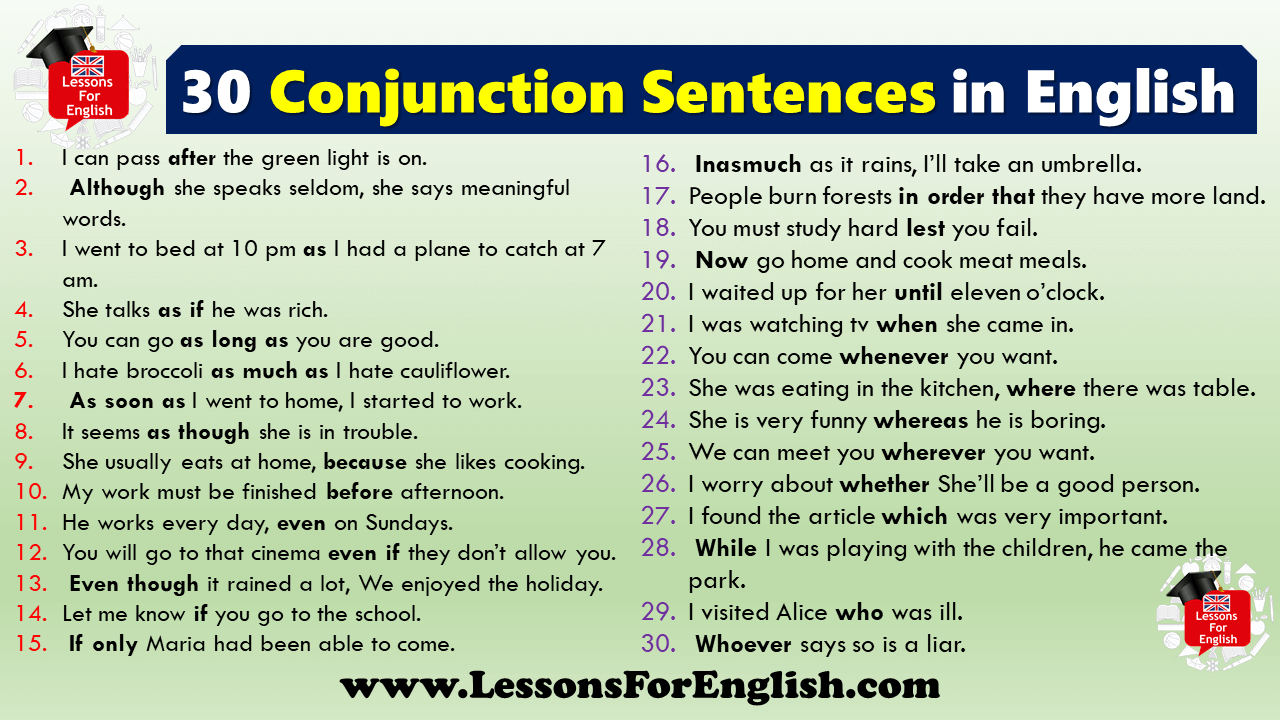Conjunctions are words that connect different parts of a sentence, such as words, phrases, or clauses. They are essential for creating coherent and meaningful sentences. There are three main types of conjunctions: coordinating conjunctions, subordinating conjunctions, and correlative conjunctions. Here, we will explore 30 examples of conjunctions that are commonly used in the English language.
1. and
2. but
3. or
4. so
5. yet
6. for
7. nor
8. although
9. because
10. since
11. while
12. after
13. before
14. unless
15. if
16. as
17. either
18. neither
19. both
20. not only
21. but also
22. whether
23. or else
24. even though
25. provided that
26. in order to
27. as long as
28. instead of
29. so that
30. while
Conjunctions play a crucial role in connecting ideas and showing the relationship between different parts of a sentence. They help to create smooth transitions and improve the flow of writing. Coordinating conjunctions are used to connect words, phrases, or independent clauses of equal importance, while subordinating conjunctions introduce dependent clauses and show the relationship between them and the main clause. Correlative conjunctions are used in pairs to connect words, phrases, or clauses that are of equal importance.
It is important to use conjunctions correctly to ensure clarity and coherence in your writing. By understanding the different types of conjunctions and how they function, you can improve the structure and overall quality of your sentences. Practice using conjunctions in your writing to become more proficient in using them effectively.
In conclusion, conjunctions are powerful tools that help to connect ideas and create meaningful sentences. By incorporating a variety of conjunctions into your writing, you can enhance the clarity and coherence of your work. Experiment with different conjunctions and see how they can improve the flow and structure of your sentences.
